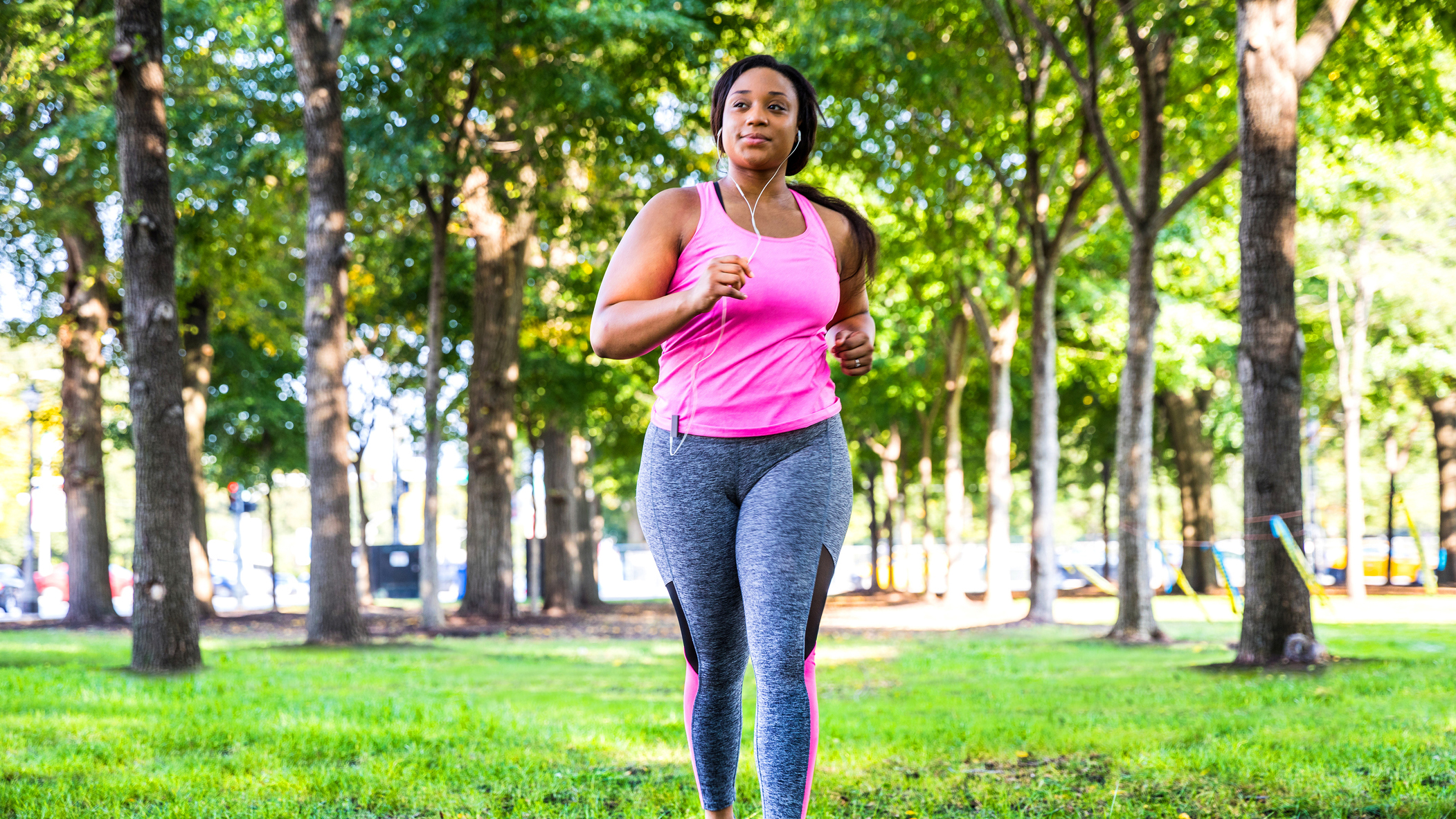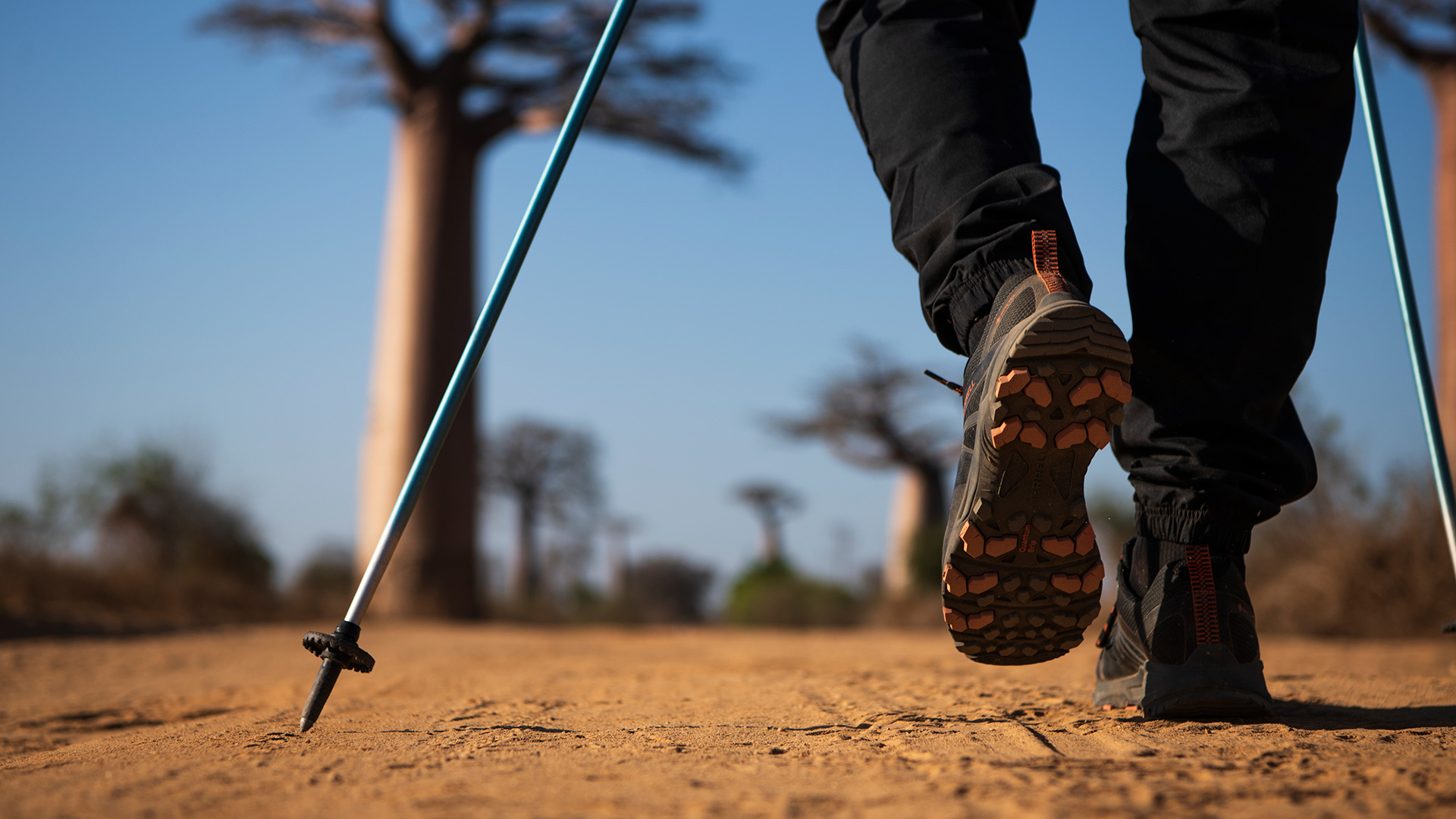Walking to lose weight: Low-impact exercise to help reach your goals
Walking to lose weight is a great way to stay active, burn calories, and look after your mind


Walking to lose weight is an accessible, free way to start dropping pounds. Although walking is a core part of the day for many of us as we head into work, take a stroll to the store, or take a long walk at lunch, finding time for a dedicated walk can play a significant part if you're looking to lose weight.
Whenever you choose to clock up some steps, you can track your progress using one of the best running watches. These popular wrist-worn devices come with a step counter built-in and alert you when you've reached your daily goal. But they also can monitor your heart rate and track your sleep, so you get a more well-rounded picture of your health.
If you're wondering how many steps you should take each day, there's not always a fixed answer, although studies suggest between 6,000 and 10,000 each day. Whether you want to start moving or increase your physical activity, walking to lose weight is a low-impact way to look after your body and your mind without a gym in sight.
1. Take it easy if you're new to exercise
There aren't that many exercises that are free, easy and don't require any special equipment, but walking ticks all those boxes. It's also a great way place to start if you're completely new to exercise as you can set the pace as slow as you need to, then build up to faster hikes and more challenging terrains, or even switch to jogging once you've built your fitness levels up.
You can start gradually, but if you want to build up speed and you haven't taken regular exercise for a while it's always advisable to check you're ready with your doctor.
Although running obviously burns more calories, walking for half an hour can shift 100. But if you're obsessing over burning calories or achieving step counts, you're setting yourself up to fail. Instead, enjoy the movement and the fresh air and walk every day so you build up a long-term habit that has nothing to do with weight loss and is better for your overall health.
2. Invest in a good pair of walking shoes
You don't really need anything other than a comfortable pair of shoes to go for a walk. If you're walking regularly, it's worth investing in a good quality, supportive pair of dedicated walking shoes.
Get the Fit&Well Newsletter
Start your week with achievable workout ideas, health tips and wellbeing advice in your inbox.
There's options like the Merrell MQM Flex 2, which are lightweight, supportive and provide plenty of grip. Opt for the GORE-TEX version if you're likely to be encountering poor weather or puddles. Want more options? Check out our pick of the best shoes for walking.

Try your new shoes on and walk around the house in them before you head out to make sure they fit snugly, don't rub anywhere, and support your foot properly. The way each person walks does vary, and you can easily damage your feet by wearing shoes that don't provide adequate support. If you're thinking of going cross-country, you might even want to opt for a pair of walking boots.
Either way, pair up your shoes with some quality walking socks – there's nothing worse than a blister emerging halfway around your route.
While the shoes are the most important thing, you'll also want to pop on a pair of trousers that are stretchy, fairly lightweight, and won't fall down as you walk; jeans are best avoided. If you're happy in something close-fitting, we recommend a pair of the best workout leggings for complete freedom of movement.
3. Perfect your stance
Next time you're out for a walk, take a look at what's happening with your body. If you're used to being stuck at a computer all day, you could be hunching forward, so make an active effort to straighten up and keep your head level. Don't be tempted to look at your phone while you're walking.
Firstly, it's a good time to take a break and secondly you'll automatically hunch over and what you really need is to keep your neck long and straight. Notice where your shoulders are and take them out of your ears. If you've got an image of a power walker in your mind, lose it! Your arms should be relaxed, with a slight bend at the elbow and then you can let them move naturally.
Build up stamina using Fartlek training
A good way to vary your speed is to use Fartlek training. The name might cause a snigger, but it's a really useful technique to build up your stamina. Translated from Swedish, Fartlek is 'speed play'. So you vary the speed of your walk, with faster, intense bursts combined with intervals where you can recover.
Try this: warm up by walking at a natural pace for ten minutes. Then move into a 30-second burst of walking at your maximum speed, followed by a minute at normal speed. Repeat this.
It will feel tough on the first try, but as you get used to it you can move on to extending the faster period in 15-second increments until you build up to a minute, and eventually two.
Keep the minute's walking at your natural speed in between so you get your breath back during that all-important recovery time. If you're walking to lose weight, this is a good way to kick your body into its fat-burning zone. But the most important thing is it's good fun.
5. Vary your routes
Changing your route is one way to keep things interesting, but different terrains also challenge you. You might hit the streets one day and the park or countryside the next. Add in hills for more of a challenge and try to maintain the same speed as you go. Don't be afraid if you get a little out of breath on hills at first, but if you have any chest pain that's time to stop and get it checked out by your doctor.

6. Time your walks to boost your brain
Walking is great for your mental as well as physical health. For some people, walking clears the mind; for others it's a time to think; and others find it a mood-booster.
If you've got a tough phone call to make or a meeting where you'll have to come up with ideas fast, go for a walk first and think it through. Start the day with a walk, or step out when you feel a slump and would be tempted to take an afternoon break – find your sweet spot and put that routine in place.
7. Buddy up
If you need motivation to get started, just think of walking as a social activity. Meet up with a friend and you might push each other to up your speed or stay out longer, especially if the chat is flowing.
And if you'd rather set out for a walk alone, find another way to motivate yourself. A playlist of uplifting music, a podcast or an audio book is good, but don't forget to unplug and immerse yourself in the sounds of what's going on around you too.
To learn more about how walking impacts your health, check out our feature on the benefits of walking.
Hannah has a series of experience in digital journalism behind her. She works as a freelancer with articles published in the Guardian and Independent. They have recently become a personal trainer and finds motivation in music, outdoor workouts and making other people love fitness.